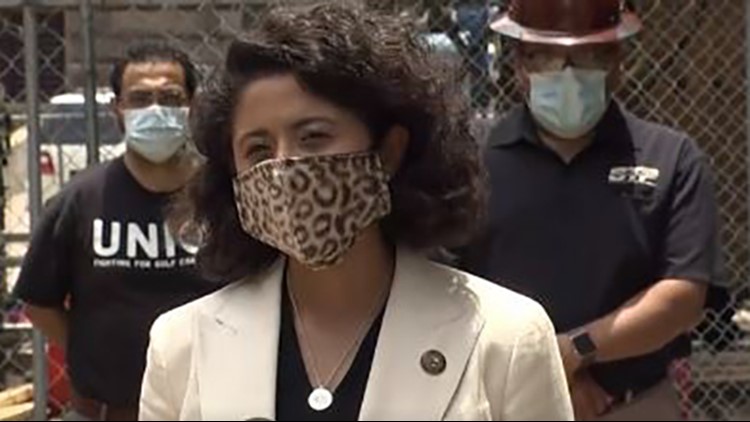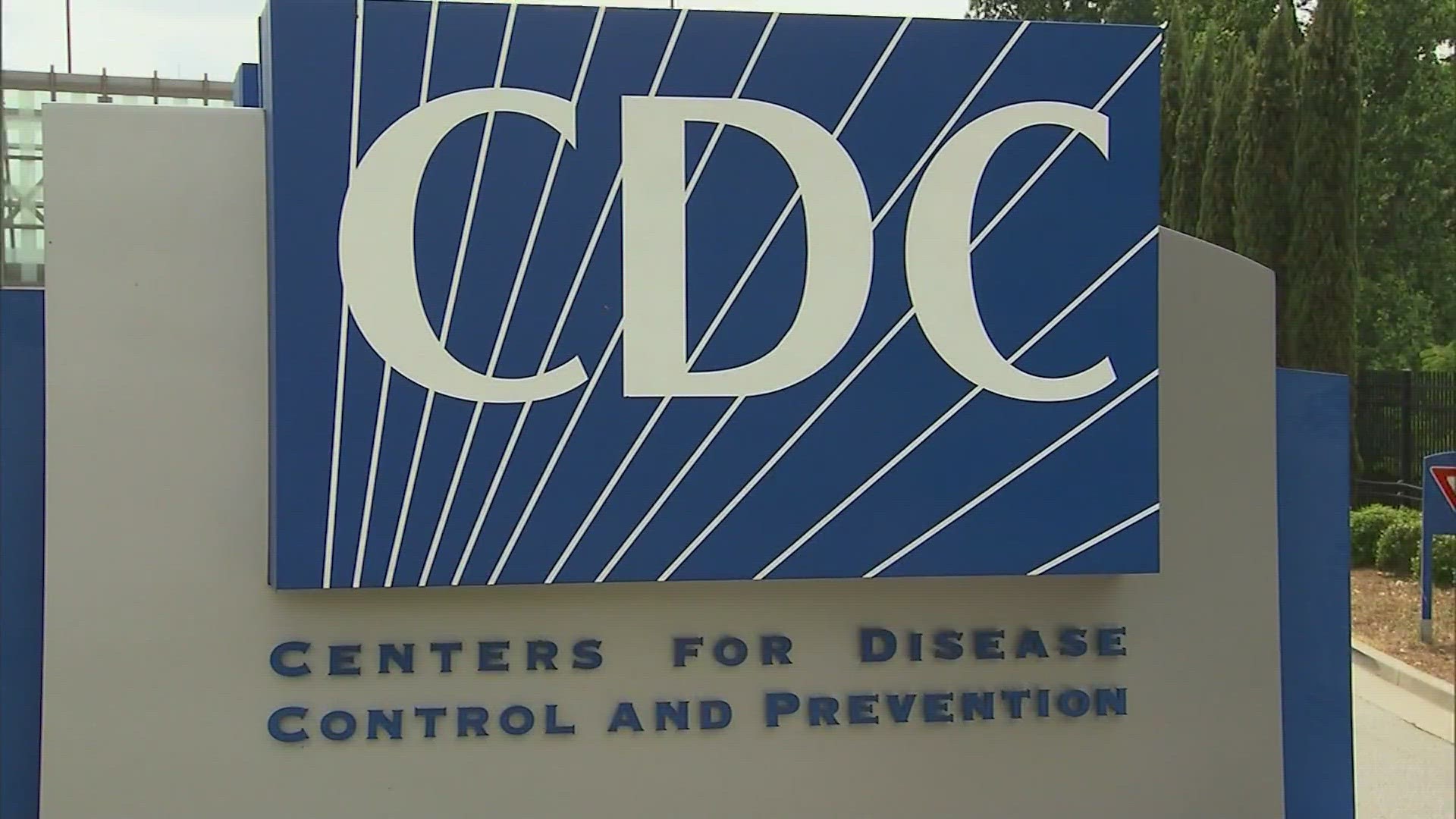HOUSTON — Harris County Judge Lina Hidalgo said Thursday we’re no safer from the coronavirus today than we were in March.
That’s why she’s extending the Stay Home, Work Safe order until at least June 10.
“This is no time to tempt fate,” Hidalgo said.
She urges everyone to continue to do their part to prevent a second wave of COVID-19 by staying home when possible and by practicing social distancing in public places.
“I don’t want people to get the message that we’re done, and the virus is over,” Hidalgo said. “There’s still no treatment, there’s still no cure, there’s still no vaccine.”
There are now more than 10,000 confirmed cases of COVID-19 in Harris County, including Houston. More than 200 people in the county have died from coronavirus while 3,914 have recovered.
While the curve remains flattened here, there is concern reopenings will prevent more progress in the battle to stop the spread, according to Dr. Umair Shah, executive director of Harris County Health.
“We have not seen the curve going down,” Dr. Shah said.
Hidalgo said the Stay Home, Work Safe order will be amended to reflect the reopenings allowed by the state.
Hidalgo also said she’s heard from workers throughout this crisis who don’t feel safe, and from employers who want to do the right thing but don’t know which guidelines to follow.
She released safety guidelines Thursday for retail and construction workers.
Retail guidelines
Recommendations before reopening:
- Conduct routine HVAC maintenance and change air filters
- Employers should ensure regular cleaning and disinfection of all areas including offices, bathrooms, and common areas, focusing especially on frequently touched surfaces like doorknobs and drawer handles ₒ
- Clean surfaces with soap and water.
- Next, disinfect surfaces using products that meet EPA’s criteria for use against SARSCov-2, the virus that causes COVID-19, and that are appropriate for the surface. Follow the manufacturer’s instructions for all cleaning and disinfection products for concentration, application method, contact time, and required personal protective equipment (PPE)
Recommendations after reopening: - Follow CDC guidance for cleaning and disinfection, handwashing, social distancing, and respiratory etiquette
- Screen employees before entering the building for symptoms such as fever, cough, sore throat, loss of taste or smell, shortness of breath or known close contact with a person who is lab-confirmed to have COVID-19
- Have employees wash hands when entering the building and provide hand sanitizer at accessible locations
- Make sure soap and paper towels are available at all restroom hand sinks.
- Keep hand sanitizer available for staff and customers
- Signage to encourage frequent hand washing and other ways to help stop the spread
- Require all employees to wear face coverings such as a mask, cloth mask, bandana, scarf or shield to protect others
- If using gloves, make sure gloves are in good condition, no holes or visible dirt; Change gloves often or after each task, washing hands each time gloves are changed
- Where lines may form, ensure 6 ft distance using floor tape or visual markers
- Increase routine cleaning frequencies and use approved disinfectants for restrooms, high traffic, and high touch customer use areas
- Use contactless payment options if available or take steps to minimize contact during transactions
- Consider providing physical barriers like plexiglass between employees and customers when 6 ft of distance is not possible
- Planning for Absenteeism: determine how you will operate with a reduced staff if employees cannot work due to illness, staying home to care for sick family members and those who must stay home to watch their children
- Prepare to institute flexible workplace and leave policies
- Cross-train employees to perform essential functions, so the workplace can operate even if key employees are absent
- Business owners and employees should get free testing for coronavirus
Construction guidelines
- Identify a qualified workplace coordinator who will be responsible for COVID-19 assessment and control planning; all workers should know how to contact the coordinator with COVID-19 concerns.
- Be flexible with hours; try staggering or assigning team shifts to reduce the number of employees arriving and leaving at the same time.
- Screen employees before entering the building for symptoms such as fever, cough, sore throat, loss of taste or smell, shortness of breath, or known close contact with a person who is lab-confirmed to have COVID-19
- Have employees wash hands or sanitize hands when entering the building or worksite. Provide handwashing stations and hand sanitizer at accessible locations
- Require all employees to wear face coverings such as a mask, cloth mask, bandana, scarf or shield to protect others
- Train workers how to properly put on, use/wear, and take off protective clothing and equipment
- Continue to use personal protective equipment (PPE) for protection for other construction hazards
- Limit usage and ridesharing of company vehicles. Disinfect large machinery after use by each equipment operator
- Increase personal space to at least 6 ft when possible including inside of work trailers
- Remove or rearrange chairs and tables in break rooms and other areas workers may frequent to increase separation
- Clean and disinfect portable jobsite toilets and frequently touched objects and surfaces such as workstations, keyboards, telephones, handrails and doorknobs. Clean dirty surfaces with soap and water prior to disinfecting. To disinfect, use EPA-approved cleaning chemicals
- Avoid using other employees’ phones, desks, offices, or other work tools and equipment, when possible. If necessary, clean and disinfect them before and after use
- Keep in-person meetings as short as possible, limit the number of workers in attendance, and use social distancing practices
- Use alcohol-based wipes to clean tools before and after use
- All employees should be encouraged to report any health or safety concerns Employees should not return to work if they are sick. If an employee has a sick family member they live with or has been near an ill person, they should notify their employer immediately.
- Plan for Absenteeism: determine how you will operate with a reduced staff if employees cannot work due to illness, staying home to care for sick family members and those who must stay home to watch their children
- Prepare to institute flexible workplace and leave policies
- Cross-train employees to perform essential functions, so the workplace can operate even if key employees are absent
- Encourage employees to get free testing at a testing site.



